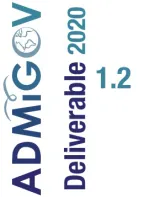Operational practices of EU entry governance at air, land and sea borders

ADMIGOV (Deliverable 1.2)
This deliverable for Work Package 1 (WP1) of the Advancing Alternative Migration Governance project (ADMIGOV) sketches an analysis of the operational practices involved in governing the entry of third-country nationals on the territory of the Member States of the European Union (EU). More specifically, this report presents and brings together the results from field research at specific segments of the EU external air, land and sea borders. This field research was guided by the following question: how is EU entry governance organised operationally, and why? The research presented here is more specifically meant to reflect, using the terminology found in the ADMIGOV inception documents, a ‘bottom-up’ perspective, meaning that the focus is on actors involved in the operational, day to day conduct of entry governance rather than in the formulation of laws, prescriptions, policies, principles or strategies. This ‘bottomup’ perspective is implemented by means of three case studies focusing on entry by air at Brussels Airport (Belgium), entry by land at the Terespol/Brześć border crossing (Poland/Belarus) and entry by sea on the island of Lesvos (Greece).
The research presented here builds on the same, shared understanding of entry across ADMIGOV WP1, as access to the territory of states, and here more specifically as access by third country nationals to the territory of the Member States of the European Union and the Schengen area. The focus is therefore explicitly on persons who are not citizens of an EU Member State or Schengen associated country. In so doing, we acknowledge that this seemingly straightforward understanding involves a number of complexities, which emerge from the research presented below.